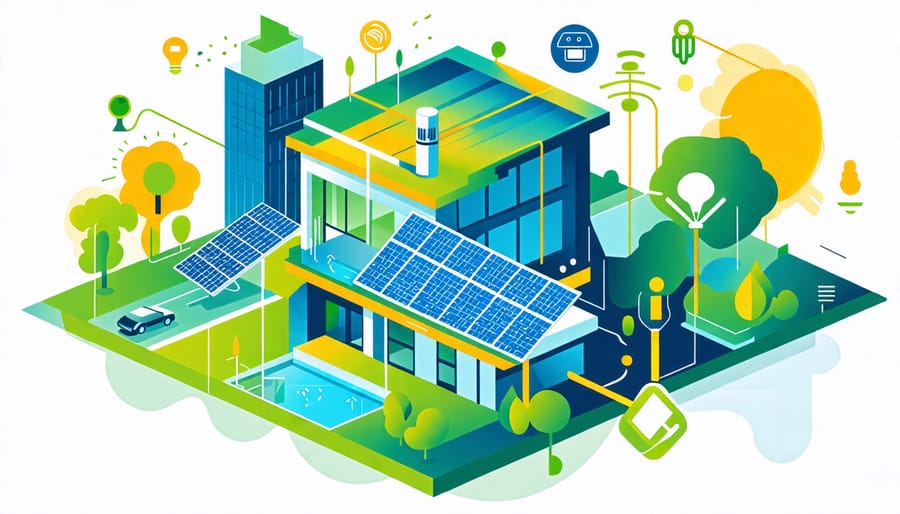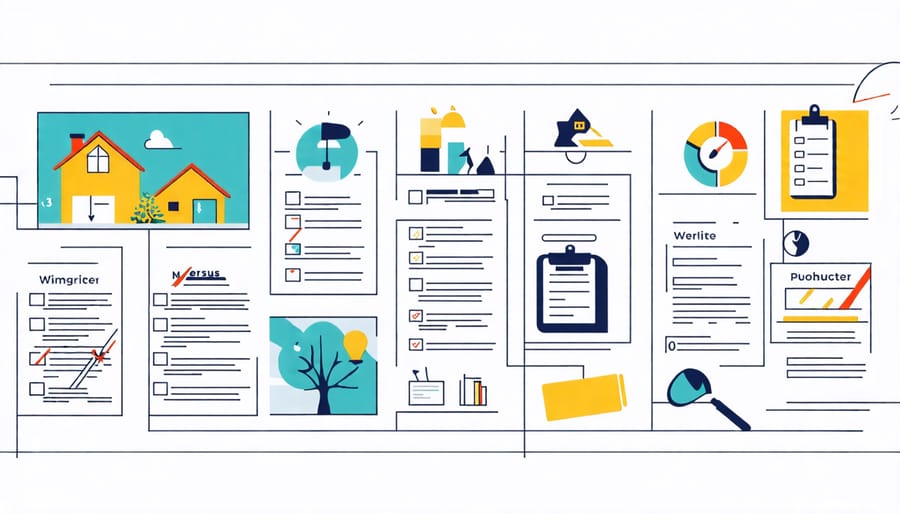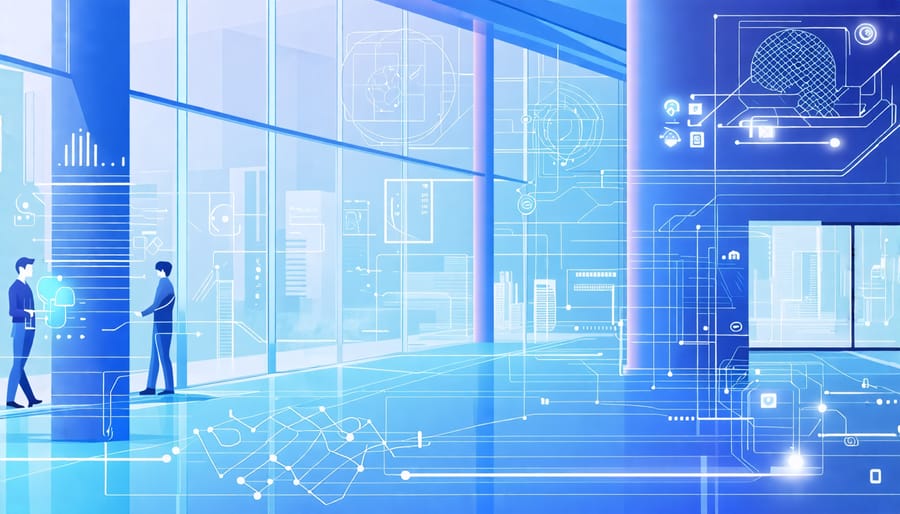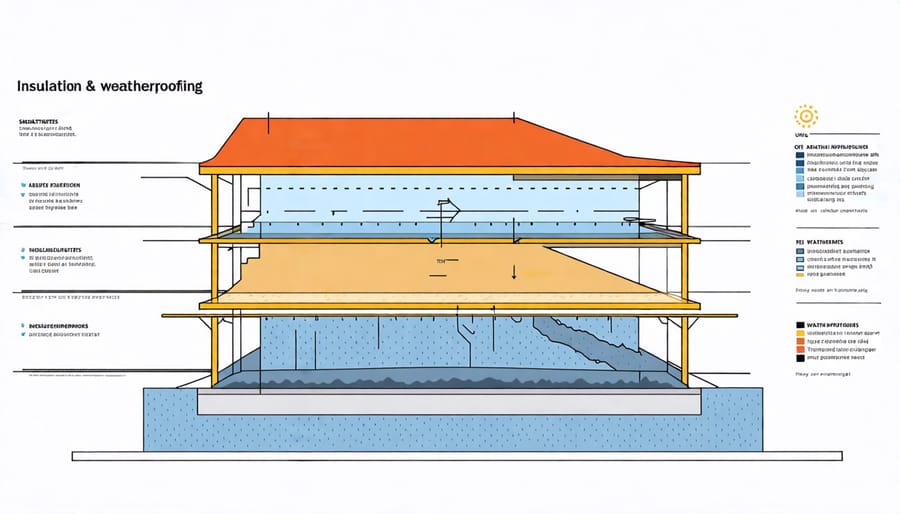
10 Smart Ways to Boost Energy Efficiency in Your Building Today
Conduct an energy audit to identify areas of high consumption and implement targeted improvements. Install programmable thermostats and smart meters for real-time energy management, reducing waste significantly. Retrofit lighting with LED bulbs and motion sensors, cutting electricity use and costs. Integrate renewable energy sources like solar panels or wind turbines to offset utility consumption and enhance sustainability.
Understanding Energy Efficiency
Energy efficiency is all about using less energy to perform the same task, reducing energy waste while maintaining comfort and functionality. It matters because improving energy efficiency helps cut energy bills, enhances environmental well-being, and boosts property value. For homeowners and property managers, it’s a win-win: you’re not only saving money but also contributing to a greener planet.
When it comes to buildings, energy efficiency can include improvements in insulation, high-performance windows, and efficient lighting. Key metrics used to gauge it are Energy Use Intensity (EUI) and the Home Energy Rating System (HERS) Index. EUI measures a building’s energy usage per square foot annually, with a lower EUI signifying better efficiency. The HERS Index is a scoring system for home energy performance; a lower score indicates a more energy-efficient home. For those keen on DIY projects, consider sealing leaks around windows and doors or installing programmable thermostats to optimize heating and cooling.
Incorporating smart technologies can significantly enhance energy efficiency. Smart thermostats, for instance, learn your schedule to keep energy usage in check without sacrificing comfort. As you explore ways to make your spaces more efficient, remember that small changes can lead to substantial savings and a more sustainable lifestyle.
Conducting an Energy Audit

DIY Energy Audit Tips
Conducting a DIY energy audit is a great way to enhance your building’s efficiency while saving on utility costs. Start by inspecting your home for any air leaks. Check around doors, windows, and outlets—drafts are energy wasters! You can seal these gaps with weather stripping or caulk. Next, examine your insulation. If your attic lacks a thick layer, consider adding more to maintain your home’s temperature.
Swap out traditional incandescent bulbs for energy-efficient LED lights. While you’re at it, evaluate your appliances. Are they outdated? If so, upgrading to Energy Star-rated models can significantly cut down your energy use.
Don’t forget to monitor your energy consumption with a smart meter or app. These technologies help identify energy-hogging habits and adjust them accordingly. Lastly, consider your heating and cooling systems. Ensure they’re serviced annually and, if possible, upgrade to a programmable thermostat. These small changes can make a substantial difference, moving you closer to a more sustainable and efficient home.
Hiring Professionals for Energy Audits
Hiring professionals for energy audits can be a smart move for those looking to enhance energy efficiency in buildings. These experts bring specialized knowledge, identifying energy waste that might otherwise go unnoticed. They assess the building’s energy use with precision, offering tailored solutions to cut down costs and boost sustainability. For homeowners and property owners alike, investing in a professional energy audit can lead to significant long-term savings and environmental benefits. Considerations include the cost of the service, which should be weighed against potential savings. Opting for a reputable auditor is key to ensuring effective and actionable insights.
Integrating Smart Technologies

Smart Thermostats
Smart thermostats are a game-changer for improving energy efficiency in both homes and commercial buildings. These devices learn your schedule and preferences, automatically adjusting the temperature to save energy when you’re away while ensuring comfort when you’re present. Integration into your existing HVAC system is a straightforward DIY project for most homeowners. Simply replace the old thermostat with a smart model, following the provided instructions and tapping into your Wi-Fi. Use apps to manage settings remotely, and gain insights into your energy usage patterns. By optimizing heating and cooling, smart thermostats can significantly reduce utility bills and enhance sustainability without compromising comfort.
Energy-efficient Lighting Solutions
Switching to energy-efficient lighting is a smart way to cut down on energy bills and enhance sustainability. Opt for LED bulbs, which use up to 75% less energy than traditional incandescent bulbs and last much longer, reducing replacement costs. Motion sensor lights are perfect for spaces like hallways and bathrooms, automatically turning off when not in use. Consider smart lighting systems, which you can control through your phone, allowing you to adjust brightness and set schedules, maximizing savings and convenience. For a fun DIY project, install dimmer switches, offering control over the ambiance and energy use in any room. Embrace these solutions for a brighter, efficient future!
Home Automation Systems
Complete home automation can be a game-changer for enhancing energy efficiency in your building. By connecting systems through smart technology, you can automatically adjust lighting, heating, and cooling based on occupancy or time of day. Imagine your home intuitively dimming lights during the day or adjusting the thermostat when you’re away, significantly reducing energy waste. With user-friendly apps, you can control these settings remotely, ensuring optimal efficiency with minimal effort. Whether you’re a DIY enthusiast looking to integrate these systems or a professional seeking sustainable solutions, home automation offers a seamless way to reduce energy consumption and enhance comfort.

Insulation and Weatherproofing
Improving insulation and weatherproofing in your home or commercial space is a smart way to enhance energy efficiency, reduce utility bills, and maintain a comfortable environment year-round. One accessible DIY project is sealing drafts around windows and doors with weatherstripping or caulk. These materials help prevent air leaks, keeping your indoor temperature stable while reducing the strain on heating and cooling systems. In addition to sealing leaks, upgrading attic insulation can significantly impact energy conservation. Opt for eco-friendly options like cellulose or sheep’s wool to add an extra layer of protection against heat loss in winter and heat gain in summer.
Consider integrating smart home technology for enhanced comfort and energy management. Smart thermostats, for example, efficiently regulate indoor climate, adapt to your routine, and provide insights to optimize energy use. Likewise, investing in storm windows or energy-efficient windows can bolster weatherproofing, offering a durable barrier against harsh weather while minimizing energy waste.
For exterior improvements, ensure gutters and roofing are in good repair to prevent water intrusion and potential insulation damage. Apply weather-resistant paint or sealant to protect surfaces from moisture, extending the life of your property while enhancing its appearance. These strategies not only promote energy efficiency but also contribute to environmental sustainability and property value. Whether you’re a homeowner planning DIY upgrades or a professional advising clients, these practical steps toward better insulation and weatherproofing are key to creating a more energy-efficient and welcoming space.
Upgrading to Energy-efficient Appliances
Switching to energy-efficient appliances is a smart strategy for reducing both energy consumption and utility bills, making it a win-win for homeowners and business owners alike. These appliances are engineered to use less power while still delivering top-notch performance. From refrigerators and washers to heating systems and air conditioners, they are designed to meet modern energy standards, often carrying the trusted Energy Star label, which signifies energy efficiency far surpassing traditional models.
The benefits of upgrading are substantial. Firstly, they contribute to a smaller carbon footprint, a significant advantage for those conscious of their environmental impact. They also offer long-term savings; although initial costs may be higher, the reduced operational expenses quickly offset this, leading to noteworthy savings over time. Another considerable advantage is improved performance and longevity—energy-efficient appliances often incorporate the latest technology, ensuring they operate more effectively for longer periods.
For DIY enthusiasts and interior designers looking to integrate these appliances in their projects, consider smart technology options that allow for remote monitoring and control, further optimizing energy use. By choosing energy-efficient appliances, you’re not only enhancing your property’s value but also investing in a sustainable lifestyle that benefits both your wallet and the planet.
Utilizing Renewable Energy Sources
Harnessing the power of renewable energy is a game changer for anyone looking to boost the energy efficiency of their homes or commercial properties. Solar panels are a fantastic starting point. They not only cut down on energy bills but also reduce your carbon footprint significantly. Installing solar panels can be a satisfying DIY project, as many companies now offer modular kits with step-by-step guides. Imagine sunny days turning into tangible savings.
Another intriguing option is wind turbines, particularly suited for properties with ample space. While less common for residential use, small-scale wind turbines can complement solar power installations effectively, capturing energy during overcast or windy days. For urban buildings, solar thermal systems are an excellent alternative, utilizing solar energy to heat water, providing a sustainable solution for day-to-day needs.
Geothermal energy, although requiring more initial setup, offers long-term benefits. By tapping into the consistent temperatures of the earth beneath your home, you can maintain a comfortable indoor climate year-round. Integrating these technologies not only aligns with sustainable practices but boosts property value too. Start small or go big—any step toward using renewable energy is a step toward a greener, more cost-efficient building.
Conclusion
Embracing energy efficiency measures offers numerous benefits, not only enhancing the comfort of your living or working space but also contributing to significant cost savings and sustainability. By integrating simple actions like sealing air leaks, upgrading insulation, or adopting smart technologies, you create a more energy-efficient environment. Investing in renewables, such as solar panels—an option detailed in our comprehensive solar panel guide—can further reduce your carbon footprint and energy expenses.
These initiatives are not just good for the planet but also enhance property value, whether for residential or commercial purposes. We encourage you to take the first step by conducting an energy audit, identifying areas of improvement, and leveraging available incentives. Considering both cost-effectiveness and sustainability, these measures are a practical way to make a positive impact. Let’s work towards a greener, more energy-efficient future together.
